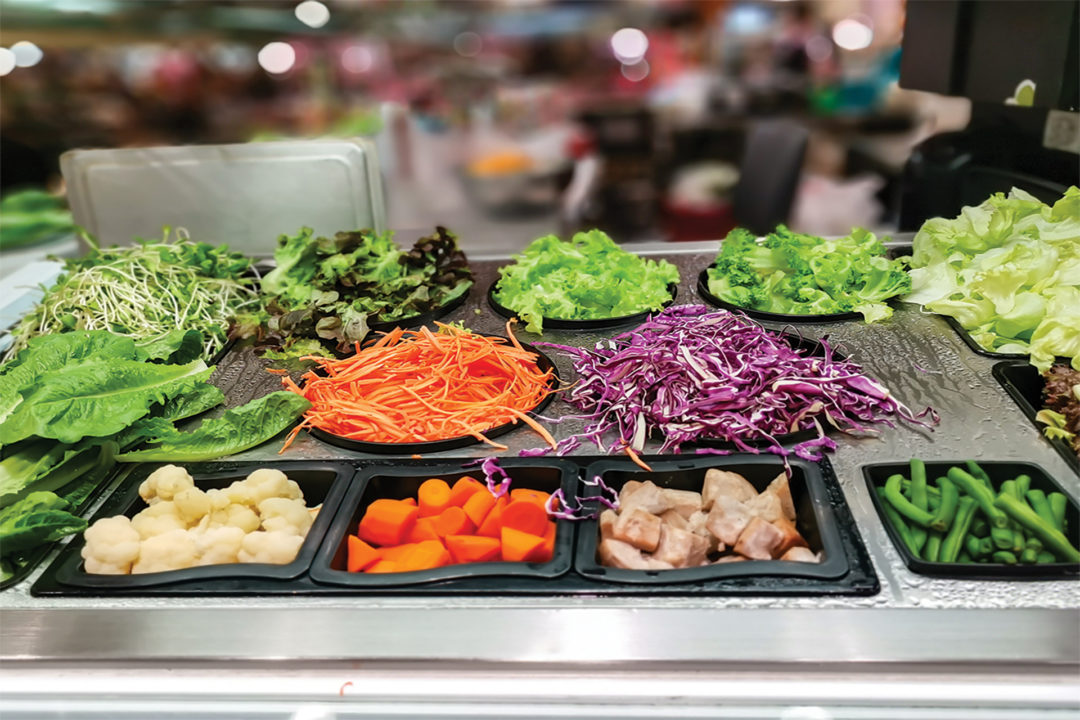Independent natural retailers looking to stay in business can benefit from knowing what retailers in the other seven U.S. retail food channels are doing with natural products. These include supernaturals like Whole Foods Market, and Sprouts; compact grocers like Aldi, Natural Grocers by Vitamin Cottage, and Trader Joe’s; mass merchants like Target and Walmart; club stores like BJ’s Warehouse, Costco, and Sam’s Club; conventional supermarkets like Giant, Kroger, Publix, and Safeway; and vitamin chains.
Flat Sales
If you follow WholeFoods Magazine’s 2023 45th Annual Retailer Survey and our accompanying Retail Insights® Retail Universe for Premium Natural Organic Food, Supplement, & Personal Care Sales, you’ll know that independent natural retailers’ market share of total U.S. natural organic sales has been hovering around $11.4 billion the last couple of years while total natural organic sales outside the independent channel have grown by about $4 billion, increasing total natural organic industry retail sales from $95.3 billion in 2021 to $99.2 billion in 2022.
While many independents are growing nicely, these gains in the channel are partially offset each year by weaker independents who close their doors. Those deciding to close typically have not updated or altered their strategies as sales and profits stagnate, so selling these businesses is unlikely. Another reason for natural product growth in the other seven retail channels is those retailers keep adding natural organic stock-keeping units (SKUs) and, in the channels for supernaturals, club stores, and compact grocers, retailers are adding stores.
Let’s see what retailers outside the independent channel are doing right with natural products, and where there are opportunities for independents to do a better job.
Whole Foods Market (supernatural channel)
It has been six years since Amazon acquired Whole Foods Market. While Amazon is tight-lipped about its results, sales in-store at Whole Foods appear not to have grown since the acquisition, despite having added several new stores. Of course, Amazon Prime online orders, delivered with products selected from Whole Foods’ in-store inventories, have grown. But the in-store experience has apparently not attracted new customers.
Anecdotal evidence suggests several reasons for the stagnation, including Amazon letting go many of Whole Foods’ most knowledgeable and veteran food enthusiasts who relished educating customers on product quality. A second factor is removing autonomy from store managers to buy local products and consolidating the company’s 12 regions into one global purchasing center at Austin headquarters. A final factor appears to be the loss of energy in the presentation that previously joyously celebrated all aspects of food culture, replaced with a soulless technological veneer promoting cashier-less checkout and minimizing human interaction.
Takeaway 1: Hang onto your most knowledgeable team members, who know your products best and enjoy engaging with and educating customers about them.
Takeaway 2: Seek out small, local makers of premium products, and help them prepare for selling at retail. By supporting these niche brands, you will become an important customer of theirs, and at the same time differentiate your store from the competition.
Sprouts Farmers Market (supernatural channel)
Several years ago, comparable store sales—the annual sales change in the same store compared to the year before—began slowing at Sprouts. Sprouts had also been increasing its new-store size from the low 20,000-square-foot range to 30,000 square feet, yet had not significantly improved sales or profits. In addition, the company had been aggressively promoting high-frequency products in fresh produce and other everyday items with deep discounts to attract a broad spectrum of shoppers.
New management took strong measures to boost decaying profit margins by cutting out the broad-based deals and began a strategy to shrink new stores back down to 23,000 square feet on average, closing several older, underperforming units. Explaining the moves, management said smaller stores would cost 20% less to build and be cheaper to operate, while achieving the same or better sales as the larger footprint. Management also said by taking away the overly generous deals, Sprouts would only lose the customers who came in exclusively for the deals without buying other products. Being a public company, Sprouts was between a rock and a hard place: It couldn’t sustain the aggressive deals and maintain profit margins sufficient to satisfy shareholders.
Takeaway 3: Don’t fire your customers by suddenly reducing periodic promotional activity. If you find yourself in a profit squeeze, it is better to slightly increase your prices by one, two, or three percentage points across the board, so that the increase in suggested retail prices is 10 to 20 cents; not enough to disturb shoppers. Avoid known-value items (KVIs in the trade); high-frequency purchases like milk gallons, bananas, and eggs, whose prices your shoppers know by heart. Pickled daikon, no one knows the price.
Takeaway 4: If you have price-sensitive shoppers who come in just for your deals, first identify them, then empower your team to gift them small product samplings you’ve previously selected as interesting giveaways. Hint: Brands will contribute to sampling if you let them know you have a “program.” By doing so, you’ll be engaging the phenomenon of “reciprocity:” Shoppers will feel obliged to pay you back for the gift, the easiest way being shopping more with you.
Aldi (compact grocer channel)
Compact grocers operate in 20,000 square feet or less. Aldi has more than 2,000 U.S. stores that carry 90% private label products. Initially, Aldi’s product quality was low to have the absolute lowest retail prices of all grocers. But realizing an opportunity to “premiumize” its assortment, Aldi has gradually added natural and organic products under its own label and broadened its appeal to a wealthier demographic.
Takeaway 5: You can differentiate your store from the competition by offering private label products under your store brand name. One of the easiest product categories to develop private label offerings is vitamins and supplements. There are high-quality suppliers who will tailor your assortment to fit your needs. If you carry a good assortment of foods, you can source some local producers willing to put your label on their products. Apple cider, baked goods like bread, cookies, granola, and muffins; jams and jellies, and vinegars are some examples where the minimum order to use your label may fit with your potential sales volume.
Costco (club channel)
Costco has always offered bulk sizes of fresh perishable meats, poultry, seafood, dairy, and produce. With the pandemic, customers increased their fresh-food purchases, including many more natural and organic options. Throughout the pandemic, management reported that natural and organic perishables were driving company growth.
Kroger (conventional supermarket channel)
Kroger sells more sushi than any other U.S. retailer. Surprised? With approximately 3,000 stores, Kroger easily outpaces other retailers offering sushi. Kroger also claims to sell the most organic produce in the country, also by virtue of its average 24-foot organic produce displays in most of its stores. Management also touts its deli; hot and cold soup, salad, and entrée bars; grab-and-go; ready-to-heat, ready-to-eat meal solutions, as driving business post-pandemic.
Vitamin Chains (vitamin channel)
The two largest U.S. vitamin chains, GNC and The Vitamin Shoppe, several years ago retreated from the public stock markets to go private. Results had been on a long-term decline as traffic and sales shrank each year. It appears the pure vitamin and supplement assortment, with zero fresh foods, failed to keep shoppers interested.
Takeaway 6: U.S. shoppers love fresh foods. Retailers offering high-quality fresh proteins, produce, and prepared foods consistently report traffic and sales gains. While the most difficult of all product categories, fresh perishables, when done well, almost guarantee you’ll lock in regular visits as hungry shoppers check in to see what’s available for breakfast, lunch, dinner, and snacking.
Takeaway 7: If your store is in the suburbs, perhaps in a strip shopping center, you have an opportunity to increase sales and traffic by offering lunch. With the move to remote work, many former commuters are staying home at least part of the week, and often go out for a nearby lunch. A simple sandwich, soup, and salad menu could drive your business to new levels.
Amazon Fresh (conventional supermarket channel)
You may have heard Amazon has paused the roll-out of its Fresh format, typically 30,000-square-foot conventional-assortment supermarkets, halting at about 45 U.S. units. The company says it hasn’t found the right formula yet. Along with its stalled results at Whole Foods Markets, evidence is building that Amazon’s technological approach to grocery retailing is underwhelming food shoppers.
Takeaway 8: What made Whole Foods Markets successful, pre-Amazon under its co-founders, Peter Roy and John Mackey, was their passion for food. Whole Foods hired foodies and other food experts, like cheese mongers, sommeliers, and butchers, all of whom loved to engage customers in conversation using their food and drink expertise to drive sales and shopper loyalty. Lose that passion, and you risk removing what may be the most important reason shoppers keep shopping with you.
Walmart (mass market channel)
Walmart is partnering with PepsiCo to develop a large regenerative agriculture program that will cover more than two-million acres of farmland in the U.S. and Canada. The company wants to improve the beginning of the process where it gets all its fruits and vegetables for its stores. The program will deliver about four-million metric tons of greenhouse gas emission reductions and removals by 2030, roughly the equivalent electricity needed to serve just over three-quarter-million homes for a year. The company says its goal is to improve soil conditions and water quality for farmers.
Takeaway 9: Do you believe impostors have co-opted the trappings of the natural products industry? Better adjust your thinking. Large companies like Walmart are adopting the values and practices of natural organics that won’t simply give them the halo of sustainability but will have real impact on agriculture and the environment. Better check your own credentials and make sure your customers and community know precisely why you are authentic.
Takeaway 10: Do you feel lost with social media? You’re not alone. But ignore social media at your peril because it is where the younger generations live. They exchange experiences and drive unanticipated trends. This is where the term “influencer” comes from. You need to participate, to have a stake in this new digital world. Take an active approach with your social media, your website, and gather your customers’ email addresses, and use them all to promote your bona fides.
Here are some recent comments from an independent retailer friend about the impact of social media influencers on her business:
“Influencers are driving business, unsolicited by us, into our store. They are excited to discover our store, that we are dedicated to the principle of natural health, and that we are authentic, proven by our longevity in the market. The influencers are saying things we wouldn’t necessarily say ourselves, such as recommending products for certain conditions. Many of the influencers are young, inexperienced, and aren’t particularly knowledgeable about nutrition. When they meet me in person, it is almost like hero worship; natural personified!”
What drives these influencers to enthusiastically post their experiences and recommendations online is this independent retailer’s authenticity. You’re authentic, too. Spread the word! WF










